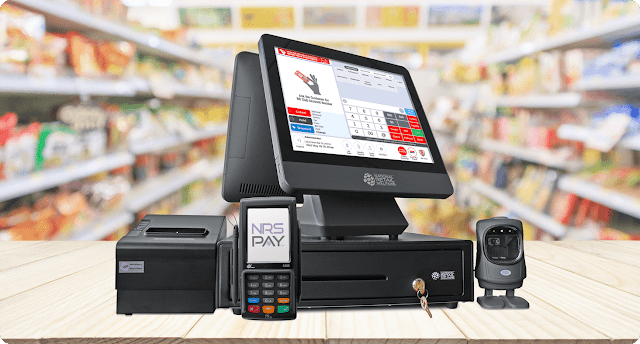Accounting Software Overview
What is Business Accounting Software?
Accounting Software tracks and manages accounting transactions and serves as an accounting information system from which decision-makers or accountants of businesses can track business processes and produce financial reports.
Their key feature is an integrated financial dashboard with a general ledger for managing bookkeeping at double entry. Popular features of this software class are as follows: Means of monitoring client inventory and purchase orders Sales monitoring Automatic invoicing Receipt collection by document or image processing Timekeeping Analytics for budgeting and revenue tracking Financial reporting accounts payable / accounts receivable functions.
These features are either contained internally (within the accounting software) or managed by integration with third-party software that performs these functions in a modular fashion (e.g. dedicated AR or AP software, Expense Management Software, Image Capture Software, etc.).
An integrated ERP (Enterprise Resource Planning) framework contains all of these functions (or supports integration with the necessary modules) and thus these items also appear in this group. Nonetheless, ERPs are often industry-specific or tailored to the needs of larger companies, and can represent overkill for business seekers of pure and simplified accounting solutions.
Some vendors sell customized accounting software unique to certain sectors, such as construction or manufacturing, to manage the regulatory and reporting needs. Depending on business requirements, the best option may be either an all-in-one solution or a kit packed with smaller, dedicated integrative modules.
The products of small business accounting software accounting & budgeting software differ greatly in sophistication. Easy, inexpensive or free systems are available for entrepreneurs and smaller firms, while medium-sized or larger firms may make use of more complex software with a wider range of features or broader processing capabilities and higher use limit limits (such as unlimited invoicing or the ability of a larger number of users to use the system).
QuickBooks, FreshBooks, and Wave Accounting are some of the leading small business-sized products. QuickBooks includes training for new users, but use with an accountant and other financial services are easy because most providers in the space are already familiar with it. FreshBooks is a little easier and requires less training; Wave Accounting is free and intended for businesses with less than 10 employees. Small companies will want to pay special attention to these areas when reviewing accounting tools:
- Cost
- efficiency
- training criteria
- Scalability and limitations, including the number of customers/invoices/users/transactions per month
- Customer support
- Reporting
- Mobile functionality
- CPA access (unless you manage your own finances)
- Credit card processing, tax preparation, and payroll services
- Integrations to third-party tools
Cloud Accounting Technology Traditionally, accounting software products have been deployed locally on client-based servers (on-site or desktop devices), and this kind of accounting software is still commonly used today. Nonetheless, following the prevalent trend in the wider tech industry, many newer apps are sold as cloud apps, distributed over the internet and accessed through a web browser.
Older, built products on-premise are often sold in "hosted" implementations, but this isn't the same thing. "Cloud" typically means Software-as-a-Service (SaaS) where the provider operates the software application on behalf of all customers and the entire hosting infrastructure. In this one-to-many model, the software is built to be distributed, and customers access the software via a simple web browser.
Examples of cloud accounting vendors include Xero, Wave, Intacct (acquired by Sage), and NetSuite. On-premise vendors including QuickBooks and Sage are also selling cloud products, too. Read more in Accounting Software on a cloud vs. on-premise phenomenon.
Accounting & Budgeting Apps & Capabilities
The general ledger tools form the foundation of most systems for accounting & budgeting. Stock, order, and payroll management functions can be included within the platform as modules or may be handled by third-party plug-ins; some of these functions are unique to the industry.
Accounting & Budgeting tools also provide reporting and customization/configuration features that are popular in several software categories, such as dashboards and custom configuration APIs. For accounting firms that manage finances for multiple businesses, additional capabilities are important.
General Ledger Features
The general ledger is a record of transactions and balances. These features comprise the basic bookkeeping functionality of the software:
- Accounts payable and receivable
- Cash management
- Bank reconciliation
- Expense management
- Time tracking
- Fixed asset management
- Multi-currency and multi-division support
- Regulations compliance
- Electronic tax filing
- Self-service portal
Inventory Management Features
Such features offer companies the ability to monitor and control the movement of products or resources into and out of inventories. These are important to physical-inventory sectors, such as retailers and suppliers. The functionality of inventory management Addresses:
- Inventory monitoring
- Automatic reordering
- Location management
- Production module
Payroll Management Features
Payroll management features are important for managing the costs and money flow related to the employees of a business. Depending on the size of the company and the number of workers (e.g. full time, part-time, contractors, etc.) these may be more or less complex. The roles of handling payrolls include:
- Pay calculation
- Benefit plan administration
- Direct deposit files
- Salary revision and increment management
- Reimbursement management
BPO Accounting Features
BPO stands for Outsourcing of corporate processes. These features are important for accounting firms which use the product on behalf of customers:
Branded dashboards, with a specific view for each company with the accounting type name and logo displayed
Company roll-up features that allow users to aggregate data for various organizations within a single client (e.g. data for all convenience stores within a certain zip code)
Client consolidation in a vertical market to provide a performance measurement/comparison test Configu
Consolidation of data through clients in a vertical market to provide a performance measurement/comparison index Configurable warnings for overdue forms and materials Billing bypass options (software provider bills company; company bills clients) Application design cloning for configuration, report format, and dashboards Single sign-on for access to all customer accounts Configurable user onboard
Accounting Software Comparison
Consider what particular accounting tools you need to use to compare various accounting systems. Some accounting systems may provide traditional accounting features, such as General Ledger (GL), Payable Accounts and Receivable Accounts (AP / AR), bank audit, fixed asset management, cost monitoring, invoicing features, and financial reporting functionality. Many businesses may require additional tools such as inventory management, payroll capabilities, dedicated budgeting software and analysis of cash flow.
Some companies can need a robust ERP (Enterprise Resource Planning) program, rather than a solution based solely on accounting. ERP systems are broader resource management systems with a wider variety of applications including procurement, order management, CRM, supply chain management, inventory management, logistics, and human resource management functions. While several businesses have a specific set of standards for flexibility, there are a few 'must-have' accounting guidelines that a majority of buyers agree on.
Certain essential features include these characteristics, such as intuitive, user-friendly UI: third-party integrations Robust reporting capabilities Cloud-based invoicing software
Pricing Information
Accounting software is most commonly sold on the basis of a contract or permanent license. Some program is sold on a 1-purchase basis for very small use cases. Subscriptions are available for under $100/month for small businesses. However, pricing can increase and differ further as the size and complexity of the accounting needs of the purchasers. Products for larger organizations may be priced by the chosen modules within the package, the integrations needed, or the number of transactions or users.
The accounting skills are also included in Enterprise Resource Planning (ERP) tools for large companies and businesses. These systems will cost a lot more than stand-alone accounting tools. ERPs can also provide additional skills that might be more useful in bundling with accounting Processes if both resources are needed by a company.
More Resources:-
2020 Buyer's Guide to Accounting Software
- Top 10 accounting software in the world
- Best accounting software for a medium-sized business
- List of accounting software
- Top 10 accounting software
- Accounting Software Free
- Freshbooks accounting software
- Desktop accounting software
- Types of accounting software
- Open systems accounting software
- Most used accounting software



Comments
Post a Comment